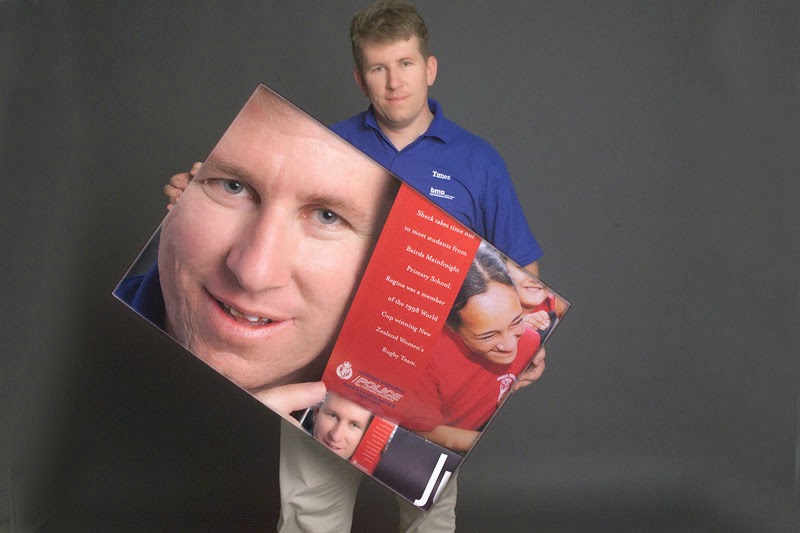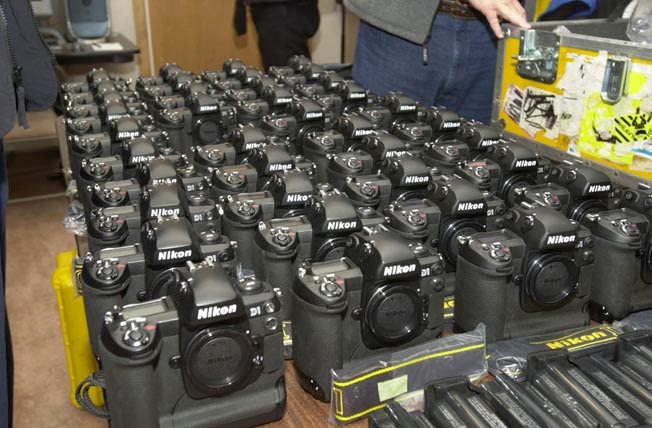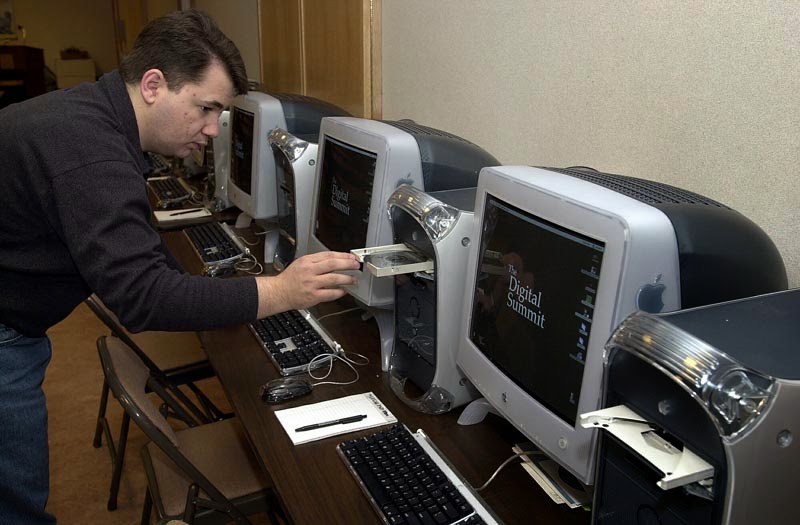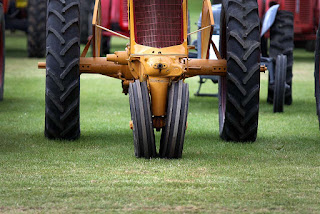 |
| Kath, Kacy and Jono at Kaikoura |
A New Year beckons and another passes into memory, I’m going
to turn 54 this year and so positive thoughts abound for a better year ahead,
new resolutions of losing weight, writing a more regular blog, traveling,
visiting friends and developing my career abound.
Road Bump#1 – the curse of propriety image acquisition software
The other day I went in search of some old photos. Now for
those as old as me that means photos shot last century, so after shifting
through boxes full of B&W and colour prints and what few old photo albums
that had survived the shifts from Auckland to Asia and back to Dunedin, I thought “Okay let’s look at what digital
files I have to use” so out came the zip-folders containing literally thousands of CDR’s, DVD’s and old Hard drives
The purpose of the search was the compiling of a body of photos to celebrate my
son and daughters 18th birthdays over the next couple of years and to also find
any photos of Kath and my wedding, shot by a mate, Wayne Martin, using a Kodak
DCS-520 camera.
 |
Kath at our wedding day in 1999 - photo by Wayne Martin using a Kodak DCS-520
This is how the images appear now, washed out or with blown out highlights or over exaggerated magenta casts |
Yes time has moved on fast it seems, and I have been recording the major
moments of my two kids’ lives on various digital formats since I first went
totally digital way back in 1998.
Now comes’ the big - BIG problem.
While post 2000 I was using NIKON D1 and then CANON EOS digital
systems plus over the years many other types of digital cameras, all merrily shooting
in the universally accepted JPEG format, from 1998 to late in 1999 I used the hot
new Kodak DCS-520 camera with its Kodak DCS propriety image software.
This means that as I surf the hundreds of images I have on
file from this period I see lots of good shots from our time as a family in
Auckland. Rows and rows of really good pics of the children as babies, my wife
looking radiant and beautiful (I was so lucky to meet her) and a trimmer
version of myself (LOL), plus a small body of work from our Howick Beach
wedding just prior to moving north to Singapore in 1999, all parading past me on
screen as 156x104 pixel .TIF preview files.
Now comes the first BIG problem- when I tried to open them
in Photoshop, expecting the Adobe RAW converter to do its job just as it did
all those years ago - nothing happens other than an annoying ‘sorry end of file
problem’ window appearing, advising me that maybe these images are getting too
old to be opened by Adobes latest versions of Photoshop etc.
But they are only 17 years old.
So the search for a solution began.
Oddly enough the usual oracle of everything – the internet -
yielded very little of value other than reference to an old Kodak site advising
me to install in their DCS software again, but it only comes in XP format and I
am using 8.0 now.
So in desperation I downloaded pre-21st century Kodak’s DCS
handling software – KODAK’s Photodesk - and yes it did install, so did it work?
– NO. Again it said there were problems with the file.
The next line of inquiry I pursued was to consider if there was
a problem with the original file? – Was I trying to open a corrupted copy? No
it was in the original DCS .TIF file format I shot and burned on the day of
capture to one of those expensive supposedly 100 year permanence Kodak Gold
CD’s, you know the ones that we all paid heaps for because they promised long
life etc. Well Kodak’s gone the way of the Dodo and I am beginning to see that
their CD’s are all going the same way as well.
Back in the day and I suppose even now today - no one will
officially tell us how long our digital files burned to DVD’s or stored in
portable Hard Drives will retain their formatting, coding and colour permanence.
I know that it’s all about the JPEG and how many times you open it relates to
the level of degradation in the image quality per generational copy you make
but what about .TIF’s.
- (It about 10 times for a JPEG file if you are wondering-
that’s opening a file and saving it back to itself – at around 7 times it
starts to blow out highlights then the magenta coding starts to take over and
turns everything red so by the time you reach 10 the image is so grainy and
corrupted it’s no use to anyone – so always remember to use ‘Save As’ rather
than simply saving back to the original. It’s all about how the JPEG code works
as it expands and then re-compresses the image data in lines across your
digital photo).
But what about the original files?
Well here are .TIF images (a format supposed to be able to stay stable), shot 17
years ago already breaking down and looking decidedly second hand even though
they are still the first generation originals and not resaves.
The more I tried to find software to open these valuable
files the more frustrated I became as PS Elements and CS4 didn’t work, neither
did Adobe Lightroom nor Adobe’s DNG convertor.
I heard Photo Mechanics may work but I don’t have it as it costs and as I had
already used a 30-day trail copy during a student trip last year I couldn’t re
activate it again, but still determined to succeed I started working backwards
in versions of Photoshop as I am sure one would work.
I hit the back room and dug out an old and tired APPLE iBook
that I had from year one of the 21st century – 2000, which carried PS CS Version One on it plus Graphics Convertor,
an old but very capable piece of Mac based software I used in the past for
image renaming and batch file conversion processing back in the old days when I
ran PHOTOVIDEOi magazine.
Here I found some success for while PS CS couldn’t open the
files, the little Graphics Convertor program allowed me to open images
individually and re-save them as full sized JPEG’s but at a cost in terms of
colour detail.
The images I saved sadly became very blown out and colour deficient. So I was
stuck – what to do lah?
Then it hit me! I had stored somewhere else an even older
APPLE iMac G3 slot loader with a 4Gb HD running Mac OS-9 on a Power PC 750 CPU,
from 1999 and I was sure it was still
running Photoshop 7 on it and I remembered that I had used it once before to
access those pesky DCS files before.
So off I went in search of this dinosaur of computer technology – Yes, I’ve
even seen one of them in the local museum.
The bright indigo blue iMac was easy to find, it’s huge, but
the search began again for all the peripherals and cables I would need to get
it powered up to see if it would do the job for me.
Making a big mess that Kath will no doubt chide me about
later, I began searching through the boxes out back until I finally found
enough cables, power plugs, USB expanders plus a working mouse and keyboard
combination to fire the old iMac up.
Kath is gonna scold me for making a mess
Jono on the iMac back in 2001
Joy and happiness as it still worked and yes – Adobe Photoshop
7 still had the proprietary Kodak DCS acquire software installed and so began a
day long exercise in slowness as I was forced to open each file up individually
and then resave them as JPEG’s then transfer the files by USB thumb drive
working on USB 1.0 technology – slow, slow and slower.
All on just 32 MB’s of RAM and a
processor many generations older than the very quick i5 and 8GB of RAM I’m
using today.
But despite the nice previews I saw I found many of the
original files, once expanded, showed they have lost a percentage of their
image information, especially in the areas of colour density, contrast and
highlight detail.
The Canon EOS -1N based KODAK DCS-520, while a pivotal camera and leader in its
field back then in 1998, it was however only a 2.01 Megapixel camera and yet it
produced many wonderful pictures in its day.
In its short model life span (1998-1999) it proved to be the first affordable
(for some with deep pockets), purpose built digital press camera capable of
shooting newspaper quality images from
the field without the tiresome exercise of lugging big bulky cameras and the
host of peripherals needed to process images from earlier models.
Nikon and Canon at this stage in the history of digital
photography still didn’t make their own digital DSLR’s. That started after 1999
with the intro of the NIKON D1 and the CANON D2000.
You can see his photos on
http://www.christophermorrisphotography.com
under portfolio #2.
His images from Russia were used on Kodak’s DCS-520 promotional material and after
using the camera on assignment in Russia, Christopher Morris said "I have
a completely new outlook on digital photography." "I love the digital
quickness of things - to be able to see the image, not when you go back to your
hotel and you take out the disk and you put it in the computer - but you see it
right away," Morris says. This and his images convinced me back then that digital
was the future.
It was much lighter and easier to use than its predecessors,
the DCS-100,200,300 series etc., but it still had a host of annoying features
which time and technology overcame.
 |
| Waiting at the Auckland Airport for the fist flight of the new century with my DCS-520 |
|
First it used large PCMCIA standard storage cards of 128MB in
size. They were actual spinning Hard Drives so if you bumped your arm while
shooting then it often caused the platters to wobble and you lost all your
photos. Then there was the very pronounced 125th of a second shutter
lag which meant when shooting sport you had to pre-empt the shot or stroke by
the player in order to get the ball in the frame. And then there was their lack
of high ISO capability as anything over 400 ISO was a lottery and you learned
quickly not to under fill the frame. Many users took out the anti-aliasing
filter because it was often shattered when using earlier EF lenses that moved externally
in the back of the lens body when focusing and often shattered the very small $800
filter. The last fault the 520 had hardly rates a mention today and it was the excessive
purple fringing or chromatic aberration as it was called then, this occurred
whenever you caught a brighter light source such as a lamp or window on the
edge of your frame.
 |
| (left) Graeme Cox from the Sunday News using a Mac Powerbook to send images from the side line at Eden Park using dial-up from a Nokia cell phone |
 |
| My photo from the same event taken at 800 ISO on my new DCS-520 - just love the grain ah. |
 |
| with my DCS-520 at Times Group |
 |
another award for one of my first digital images
|
 |
some more local press shooters with their DCS Kodak's at the 1999/2000 celebrations |
|
| In the Straits Times with a D2000 |
But in 1998 they were essence of coolness, if you had one
you were it. The little stable of newspapers I was Group Picture Editor for at
the time – the Times Group of Howick in Auckland - invested in the technology
and we were the first totally digital newspaper photographers in New Zealand
back in 1998.
While the Press/Dom/Herald still relied on film for their daily assignments,
they would often only use their one DSLR camera for late breaking news events. This
all changed after 2000 when the NIKON D1 revolutionised the world of newspaper
photography.
Wayne Martin, Adrian Dirks and I each had a DCS-520 camera and set of new Sigma
lenses which we took to assignments each and every day.
They worked well and delivered many good pictures, they even paid for
themselves after just one year.
I even won the Community Newspaper Photographer of the year award with images
shot on a DCS-520 them in 1999.
Even though they cost NZD$34,000 per body when I first
brought them back in 1998 the KODAK DCS-520 are now mere paper weights or
museum pieces. I see you can even pick up one today on eBay for a couple of
hundred bucks.
At that time one had to rely on the Kodak NZ salesman to
learn ways to make them work effectively and it was here that I discovered that
in order to understand how digital photography worked in a newspaper
environment there was only one person to turn to – Canadian Rob Galbraith.
The new internet provided me with all the info I needed to
work this new technology and to also fix its short comings, I learned by emailing
Rob nearly every week pestering him on this and that.
It was years later in a happy quirk of fate that I discovered both Rob and I
had attended the same 1991 Missouri Photo Workshop in Ste Genevieve but in the
late 1990’s and early 2000’s Rob was the man who wrote the book on how to make
the DSLR’s of the time work for you in the newspaper world.
I finally met him again in 2000 in Jacksons Hole Wyoming, during the first ever
world conference on digital newspaper photography held by the famous Rich
Clarkson – a wonderful class reunion where I thanked him for his help over the
years with a large bottle of JW black label.
Images from that first conference in Jacksons Hole Wyoming USA
 |
| Reed Hoffman (centre) and Nat Geos's (left) Kenji Yamaguchi |
 |
| Reed Hoffman and Nat Geos's (left) Kenji Yamaguchi |
 |
| Jay Maisel front left chats with others on the course |
 |
| Rob Galbraith (right) |
 |
| the really nice Mr Rich Clarkson (right) |
 |
| They do things differently in cowboy country of Wyoming |
 |
| a stack of new D1's |
 |
| and G4 macs |
But sadly now as I search my DVDs I have found the few JPEGs
files I had stored from those original DCS files all those years ago, have also
degraded to being almost unusable in many cases.
 |
| looks good in the preview but when opened it has a nice shade of green. |
So my time is spent lately slowly working my way through the
DCS files to preserve them as JPEG’s and hope that they too can be opened by the
software of the day when my children want to reminisce over their childhood
photos in future years.
Points to note:
- Regardless of what we think about old stuff, this journey
shows only too well the value of not throwing everything out in today’s modern
consumer society.
- Digital files do degrade over time and no one has an
effective answer yet as to how long they last. Let’s not go into discussing how
film while seemingly stable (as long as you store in cold dark places), lasts a
whole lot longer as we have moved on technologically and todays digital images
must surely have a use by date before they degrade too far to be useable
anymore.
- If you have images from that period before 2000, shot
using a digital camera saddled with propriety based image acquisition software,
then you should start thinking seriously about finding ways to reopen them and
store them in a much more archival friendly format.
UPDATE
Just like using Photoshop I started to go back in versions
of Lightroom and found Lightroom 3 actually still allowed me full colour
control and access to a large percentage of the .TIF DCS files so it’s sped up
things now although there are still more than few files which will never be
recovered due to the end of file problem.
 |
| Now Lightroom 3 still only gives me what it can read so back to the old iMac |
 |
| Kath and I on our big day in 1999 |
 |
| happily I can get enough images off the file to at least remember the day |
 |
| Kacy working the photo desk at Times in Howick |
 |
| on top of the world with my DCS520 |























































